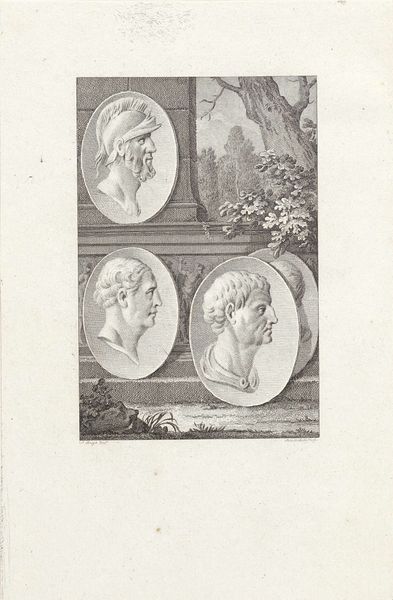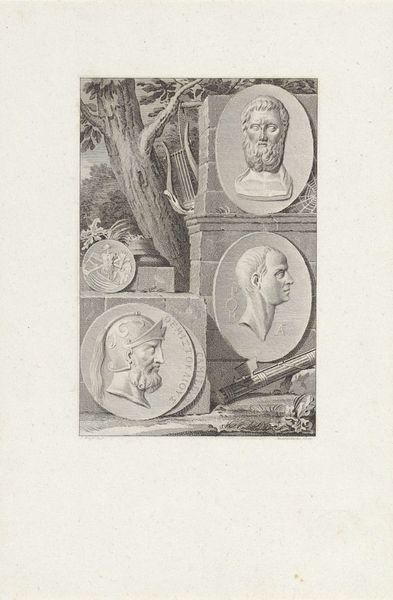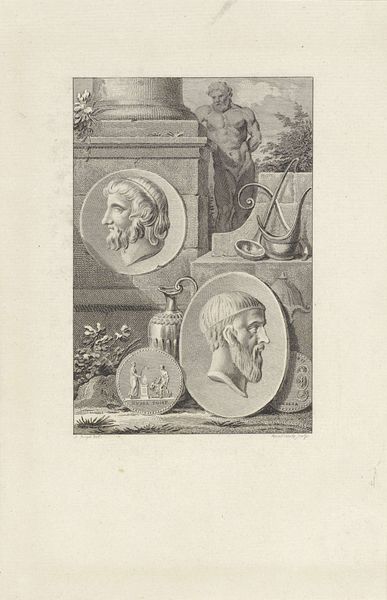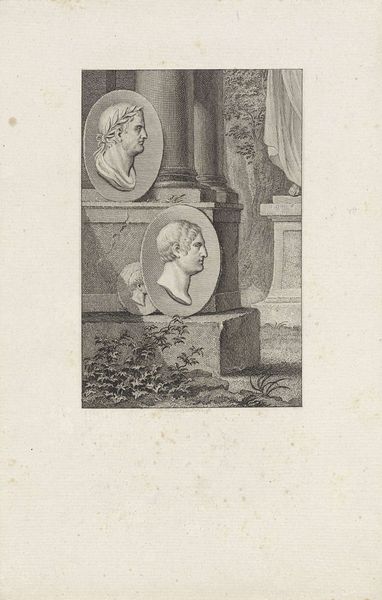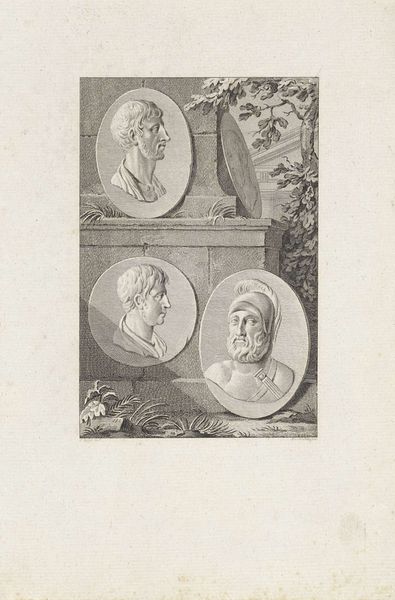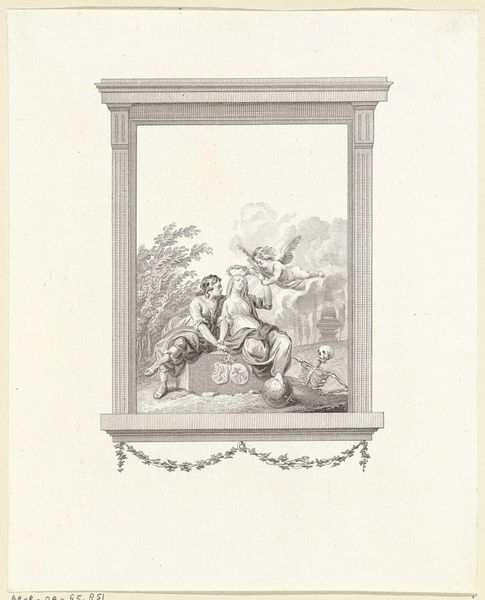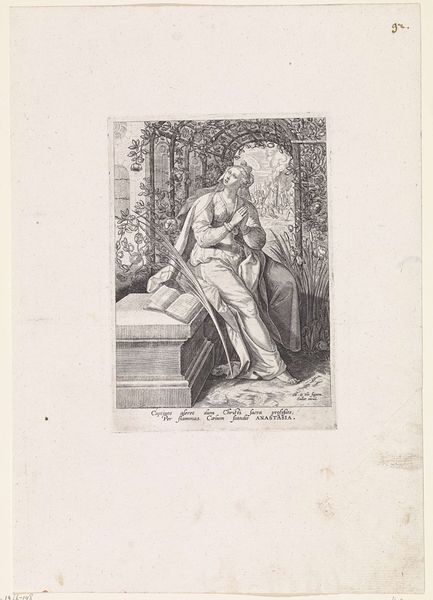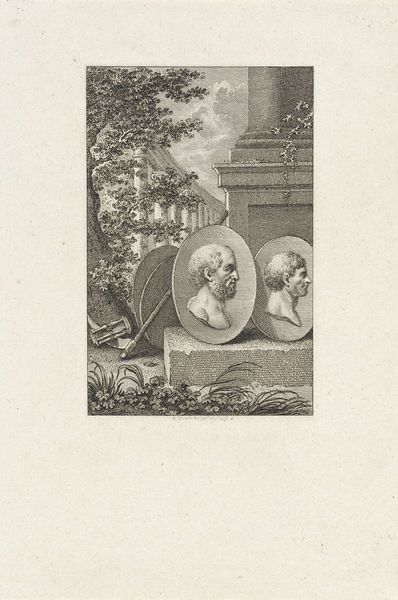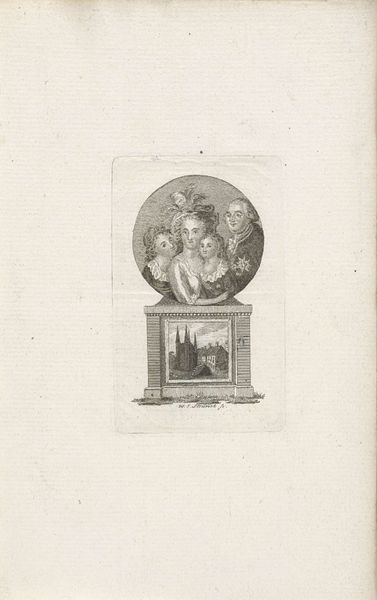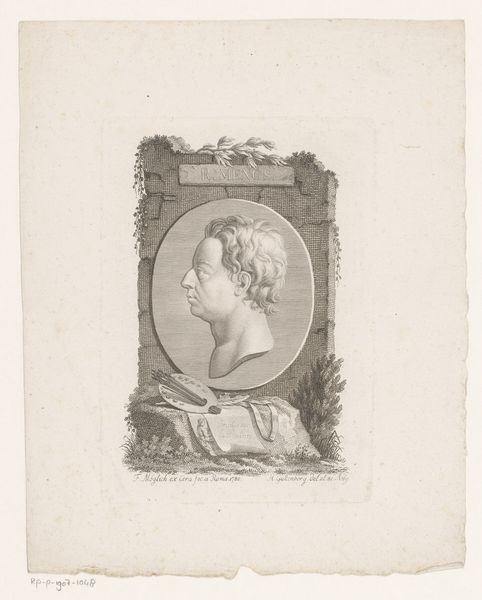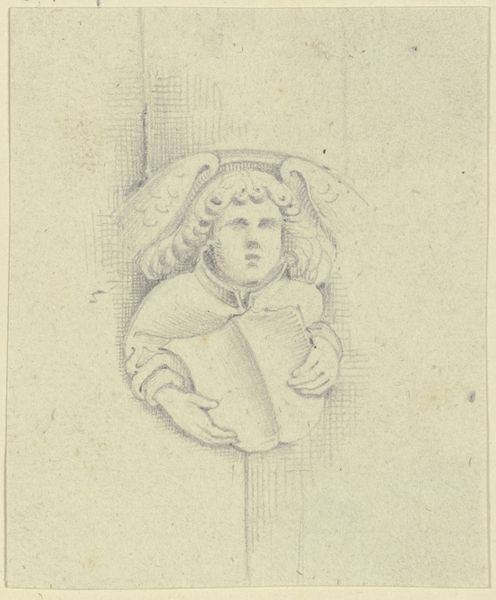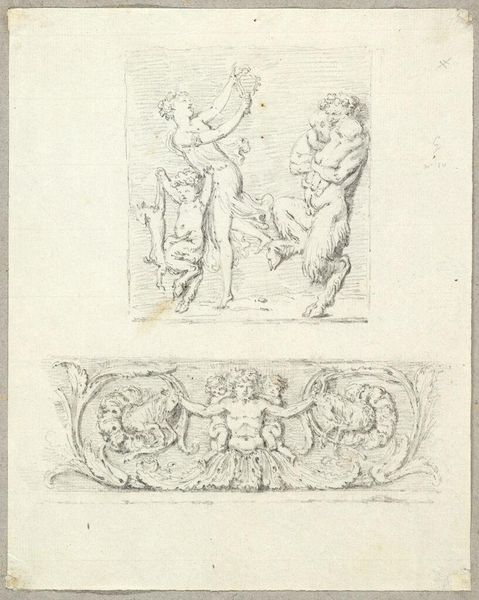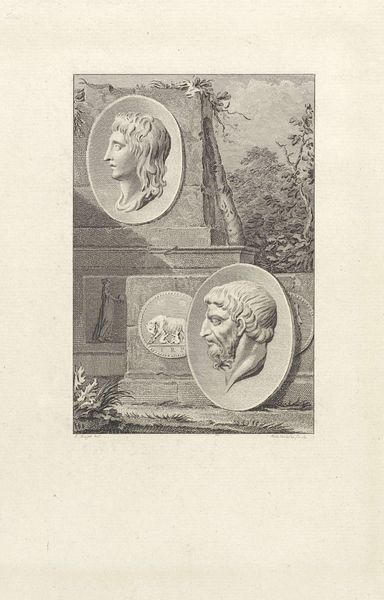
Medaillons met portretten van Alexander de Grote en Julius Ceasar op een pilaar 1789 - 1809
0:00
0:00
reiniervinkeles
Rijksmuseum
engraving
#
portrait
#
neoclacissism
#
old engraving style
#
classical-realism
#
pencil drawing
#
ancient-mediterranean
#
column
#
history-painting
#
engraving
Dimensions: height 239 mm, width 160 mm
Copyright: Rijks Museum: Open Domain
Editor: Here we have an engraving, "Medaillons met portretten van Alexander de Grote en Julius Caesar op een pilaar," dating roughly between 1789 and 1809, by Reinier Vinkeles. The depiction of classical leaders on a dilapidated pillar gives a somber, almost nostalgic feeling. What do you see in this piece, particularly in terms of its historical context? Curator: This engraving is deeply embedded in the Neoclassical revival that swept through Europe. Notice how Vinkeles presents Alexander and Caesar not merely as portraits, but as medallic forms adorning a classical column. This isn't just about admiring antiquity, but about invoking the authority and grandeur of those historical figures to legitimize contemporary political and social structures. Editor: So, it’s not simply a historical record but more like… political propaganda through art? Curator: Precisely. The choice to portray Alexander and Caesar, both figures associated with empire and strong leadership, is deliberate. This artwork exists within a landscape of political upheaval, where ideas about governance and leadership were being fiercely debated. Also, consider how accessible engravings were. They were reproducible, easily disseminated and aimed to instill certain values among a wider audience, therefore fulfilling a public role. Do you see the crumbling nature of the pillar? Editor: Yes, it almost feels intentional... like a reminder of the ephemeral nature of power. Curator: Indeed! It suggests that even empires and their leaders eventually fall. That creates a fascinating tension; are we meant to simply admire or also reflect on the impermanence of power? This highlights how art becomes a space to negotiate complex social and political ideas. Editor: This piece speaks volumes about the complex relationship between art, power, and public perception during that period. Thank you! Curator: A stimulating conversation, considering how art serves as a window into the politics and public life of its time.
Comments
No comments
Be the first to comment and join the conversation on the ultimate creative platform.
